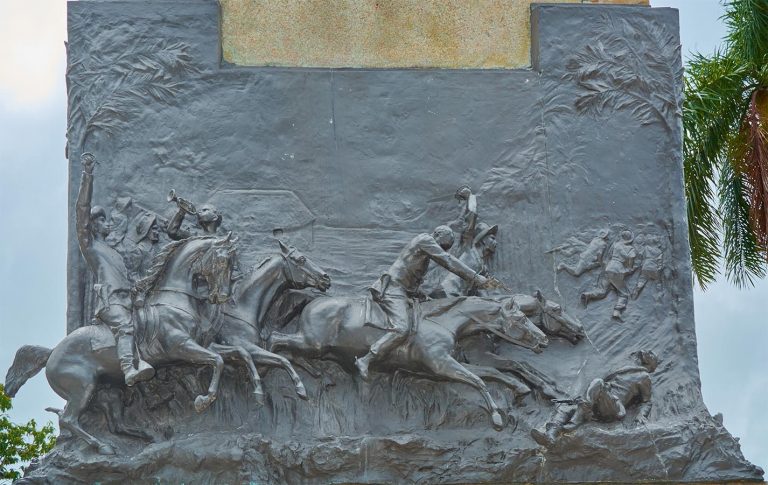There have been many situations in men’s lives that have forced them to make risky decisions. This was the case in Camagüey on October 8th, 1871, when a troop of the Pizarro Regiment made up of 120 soldiers led by Commander César Matos, captured Brigadier Julio Sanguily Garrite and one of his assistants in a ranch of collaborators of the Revolution. Along with the subordinate of Major Ignacio Agramonte, the Spanish officer also took Cirila López Quintero and Antonia Cosío. It was moral for Agramonte’s troop to rescue Sanguily and his companions. None could be left behind.
The action of Loma Bonita
The invalidated friend of Ignacio Agramonte had time to send with his other assistant, who managed to escape, notice to his boss. Knowing the news, El Mayor, due to his military genius that came from ancestral family inheritance, quickly planned a surprise attack on the Spaniards. He may have used all the cavalry, but as a daring politician his most intelligent determination led him to conclude that
“[…] Only with thirty-five well-mounted horsemen he could count on in those moments (…) and there was no time to lose, to make desperate efforts in favor of a distinguished chief and a good companion […]. Captain Henry Reeve whom he affectionately called “The American” marched in the vanguard, along with him also Captain Francisco Palomino.
In the farm of Antonio Torres where Loma Bonita was located, elevation of gentle slope and from the top of the road that opens at its top and flanks it by a bend, the enemy remained below among the trees that crossed a thread of water between spring and stones; There he stopped to refresh his horses without noticing the proximity of Agramonte’s Cavalry squadron that was coming upon them waving their machetes aloft. The Major would attack with the weapon that instilled the most panic among the enemy.
The liberating surprise
The attack of the Agramontina cavalry forces came from the rear -as Major Agramonte informed the Secretary of War-; the rest of the dismounted horsemen attacked with their riflemen on the flanks of the cornered Spaniards, who had no other option than to take cover behind the trees and flee towards the nearby undergrowth. Sanguily with a shot in one hand shouted “Viva Cuba Libre”, he was wearing an enemy blue jacket because he was lightly dressed. They fought hand to hand.
The Spaniards had eleven casualties, among them a lieutenant. The people of Camagüey carried 9 rifles, 2 boxes of ammunition, 3 revolvers, 2 swords, 1 saber, 1 tent, 60 horses, 40 mounts… Agramonte’s squadron lost Francisco Montejo, and had 6 wounded. The imagination paints the scene showing us the embrace in which the Major and the Brigadier must have merged, and thanking him for his recklessness and humanism in saving his life.
History lesson
The Major gauged what he would achieve with the action. It was not a mere rescue of one of their own. He had resumed command in January 1871 and the honor of the Revolution was at stake; and that of the Liberation Army; and that of the great manliness of the Mayor who distinguished the “exaltation of virtue” –as Martí would point out-. In making that decision he could sense his success.
He had his efficient Cavalry squadron and the courageous handful of men who followed him. He comes in support of this thesis that two years before, when giving the report on the results of the combat in Ceja de Altagracia, he said: “[…] the behavior observed by our soldiers gives us the right to expect a lot from them”. Almost a month later, on June 9th, 1869, he said to Amalia about it: “I am gathering a cavalry squadron that will leave the Spanish cavalry behind.” The Rescue … was the armed action that the Revolution needed, “great heroism” that put to the test the only Man capable of performing such a human feat at that time.
Translated by: Aileen Álvarez García






